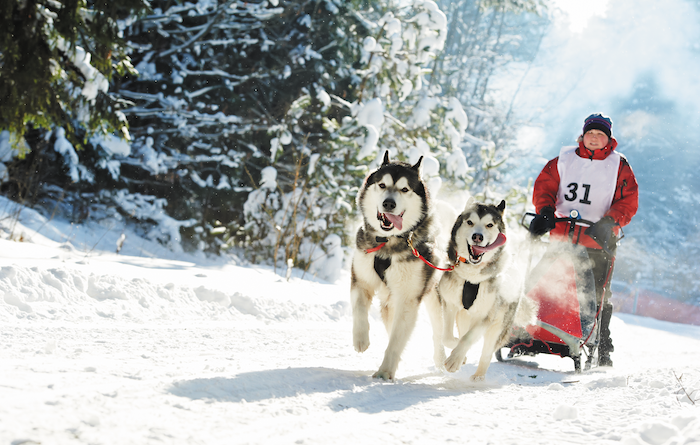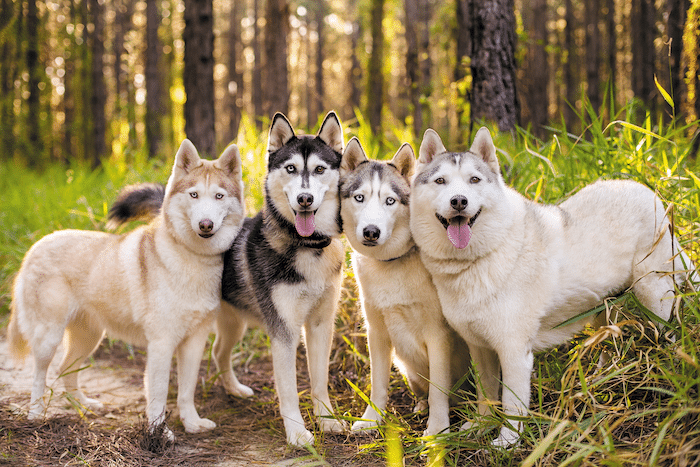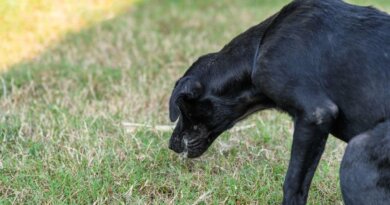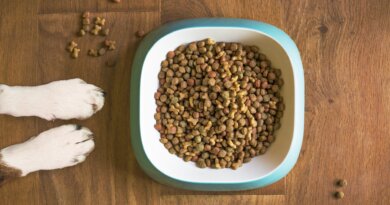Energy Unleashed: The Siberian Husky
Originally developed in Siberia by the Chukchi tribes as a sled dog, the friendly and outgoing Siberian retains his pioneering heart today. A celebrated escape artist, the Siberian quests for everyday activity and the occasional full-throttle adventure, as well.
Three-dog nights
Early Siberians were bred thousands of years ago for hard work and also to be social and gentle with families. The dogs often played and slept with the Chukchi children, keeping them warm on the coldest (three dogs required!) nights. A Siberian wasn’t bred to protect, guard or devote his life to any one human. The dogs provided transportation over vast land masses for the tribe and socialized with all the families. The breed was also developed as a highly efficient eater. They needed to consume as little food as possible, yet have the energy to haul heavy loads in icy weather over long distances. Today’s Siberian still consumes relatively little food for his size.
On the go
The Siberian is an adaptable, eager breed that revels in hiking, sledding or skijoring. He’s also an enthusiastic participant in rally, agility, canicross or bikjoring. Keeping him well-exercised is critical; sedentary owners need not apply. Some Siberians compete in obedience, but most are slightly too independent for repetitive obedience work. In other words, they’re likely to consider a Sit Stay as a silly idea in comparison to discovering new places!
Digging in for adventure
Siberians are natural diggers, both in dirt and snow. When confined by a fence, many Siberians will try to dig out to explore. Families have to build high and sturdy fences (often with a top!) to curtail the dog’s wanderlust. Siberians can go over, under or through standard fences. But keep in mind that Siberians don’t run off because they’re unhappy at home; they’re delighted when playing and exploring with their owners. But when left to their own devices (or left unoccupied), they may devise their own undertakings. They’re always on the lookout for excitement over the next horizon, ice or no ice.
At home, don’t expect a Siberian to serve as a watch dog; he’ll likely greet a stranger as family. As for vocalizing, the Siberian is more likely to howl, whine, or woo-hoo than bark.
An easygoing breed, the Siberian handles transition well and thrives in a busy household. Just keep the gates closed. The Siberian will RSVP an enthusiastic yes to an open door!
Siberian Husky Stats
Weight: 45 to 60 pounds (male), 35 to 50 pounds (female)
Life span: 10 to 14 years
Coat: Double-coated, medium in length; undercoat soft and dense
Color: Any color, from pure white to black; known for striking face patterns. The Siberian Husky Club of America states that merle or brindle markings are not genetically possible in the purebred Siberian gene pool.
Grooming: The Siberian’s coat isn’t prone to matting, but weekly brushing keeps his coat fresh and removes dead hair.
Baths: Siberians clean themselves frequently, much like cats. Bathing requirements are minimal compared to many breeds.
Shedding: Siberians don’t shed much on daily basis, but they shed (blow) their undercoats a couple of times a year.
Cut them short in summer? No! In the summer, the Siberian’s coat continues to protect him. In fact, his thick coat provides great insulation from both heat and cold.
Equipment: A high-velocity pet blow dryer helps de-shed the Siberian when he blows coat. High, sturdy, fences (that are difficult to dig under!) will keep the Siberian safe at home.
Best for: Active, adventuring families or singles
Possible health issues: Canine hip dysplasia, inheritable eye disease




